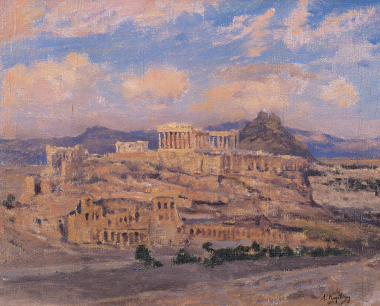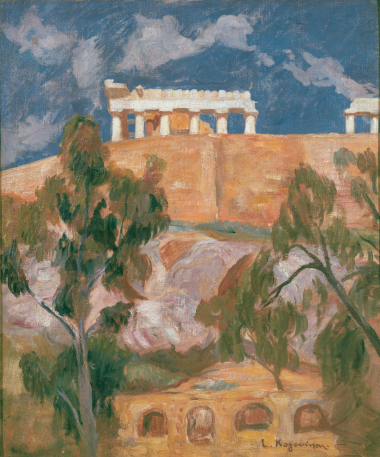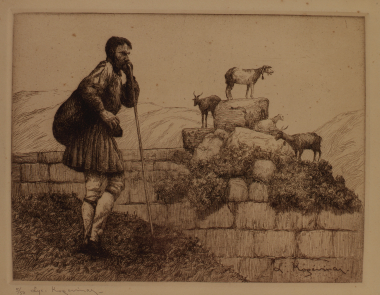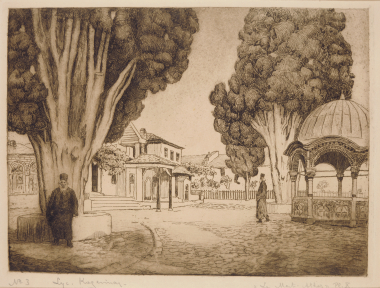Greek landscape, c.1910-1912
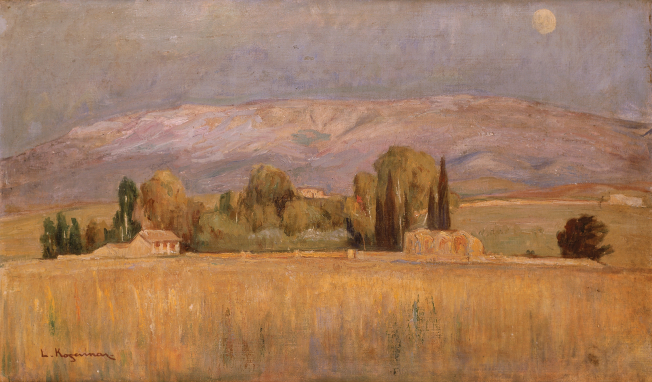
A painter and print-maker. He studied painting in Paris at the Grande Chaumiere and Julian Academies from 1904 to 1908, under the painter J-P Laurens. He began to show an interest in print-making around 1910-1912.
In 1914 he returned to Greece and served in the army as artistic correspondent. His etchings were first on view in 1915. Following the exhibition that year at the “Parnassos” Gallery , where seven etchings were displayed, D. Kalogeropoulos wrote in “Pinakothiki” magazine: “We have just witnessed the first presentation of Greek landscapes artistically created and printed by a Greek etching artist”.
After 1921 and his acquaintance with the French print-maker, Andre Dunoyer de Segonzac, Kogevinas devoted himself entirely to the field of print-making. In 1932 he returned to Greece for good and settled in Athens. Kogevinas was an artist who depicted the open country with realism, and who created large folios portraying historic monuments from Greek history.
Dividing his time, at the beginning of the twentieth century and for at least three decades, between Athens and Paris, Lykourgos Kogevinas was one of the first Greek artists to appreciate the importance of the stupendous changes which were taking place in art and the importance which these could have for the evolution of art in Greece. Although he himself did not go so far as to apply daring solutions, he played a leading part in the founding, in 1917, of the 'Techni' group, which represented whatever was most avant-garde in the world of art. Kogevinas was the first Greek artist to involve himself in engraving, a technique which won him over in the end, as he gradually abandoned painting. His long stay in Paris and the influences of French painting are obvious, in spite of the gentle character which these take on in his oeuvre.

Greek Landscape has the typical arrangement in zones which defines parallel planes. The emphasis is placed on the middle zone, which is occupied by homesteads and clumps of trees, which are rendered in a stylised manner, while the elaboration in terms of colour of the mountain defines the background. The severely simple way in which the foreground is depicted, with vertical brushstrokes, which are perhaps suggestive of a field with ears of corn, produces, fairly insistently, the feeling of an empty surface, a feature encountered in the painting of the Nabi artists.




